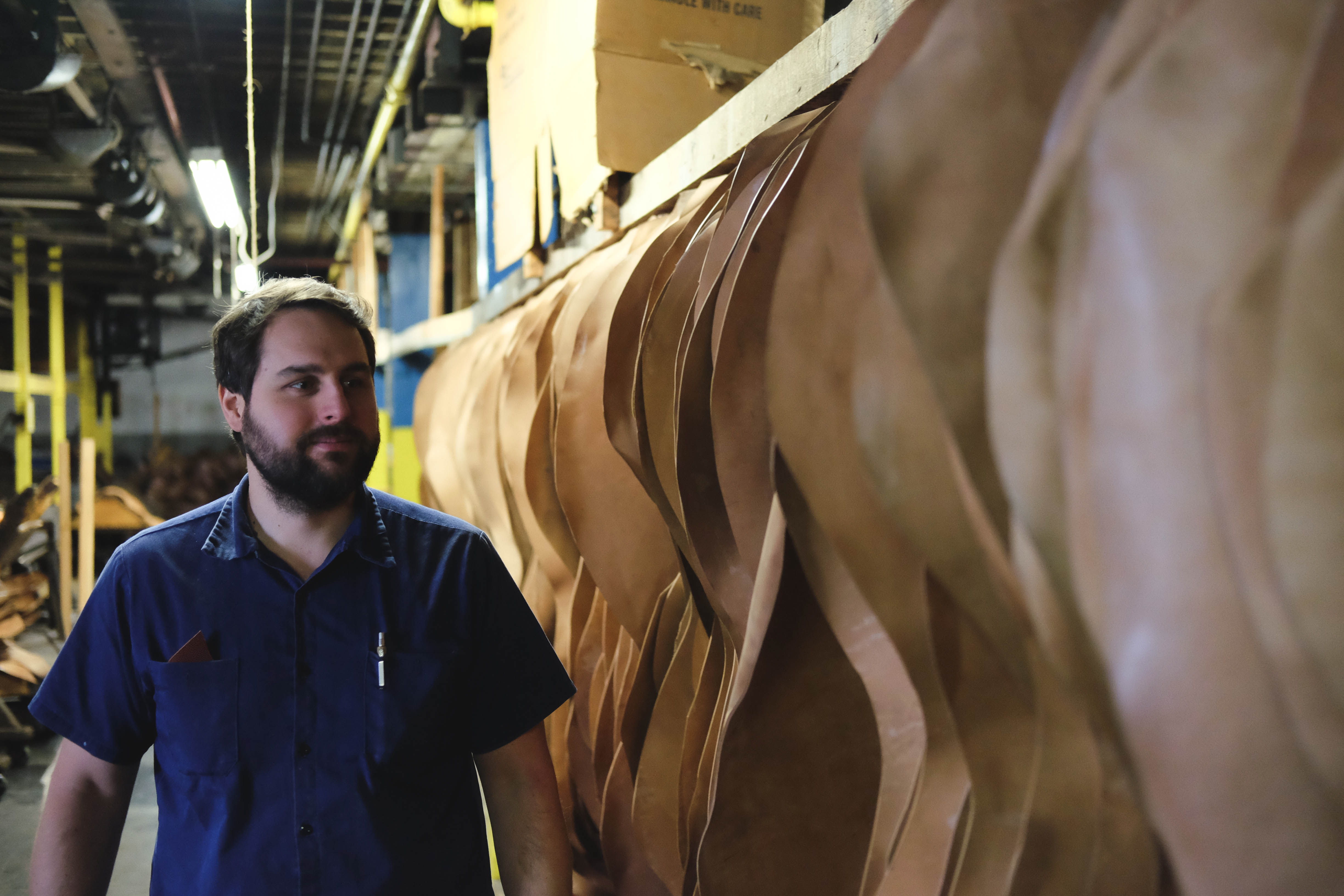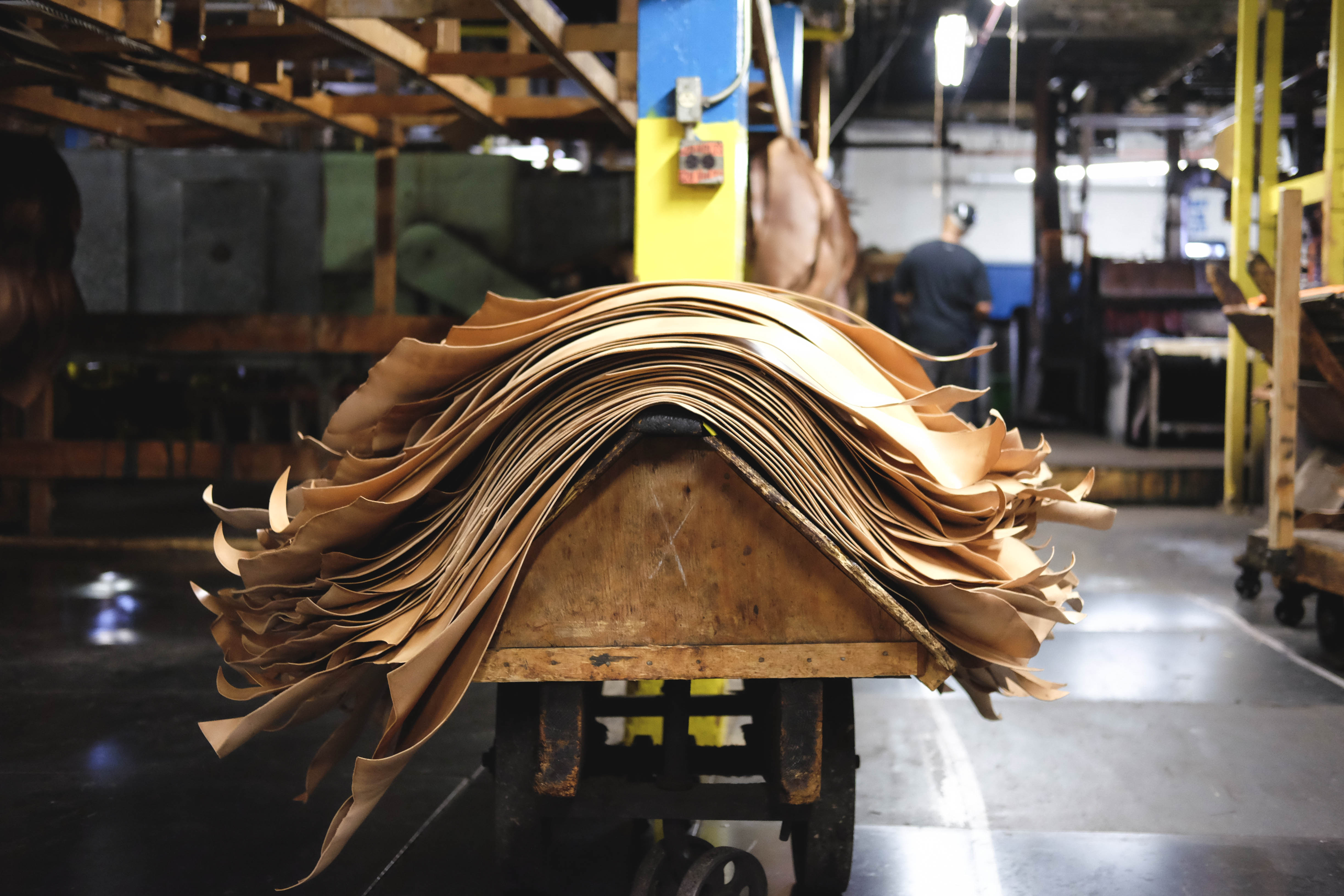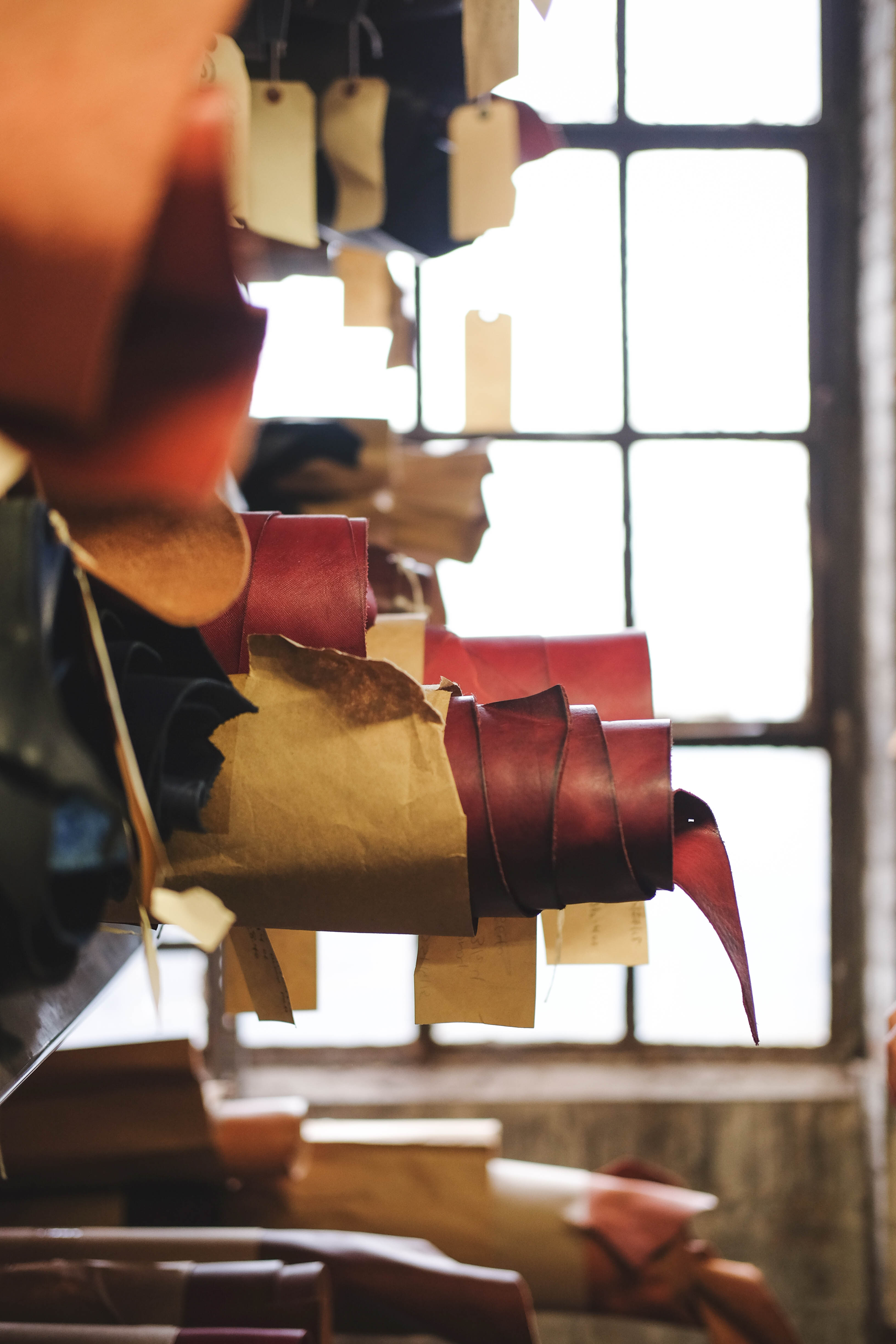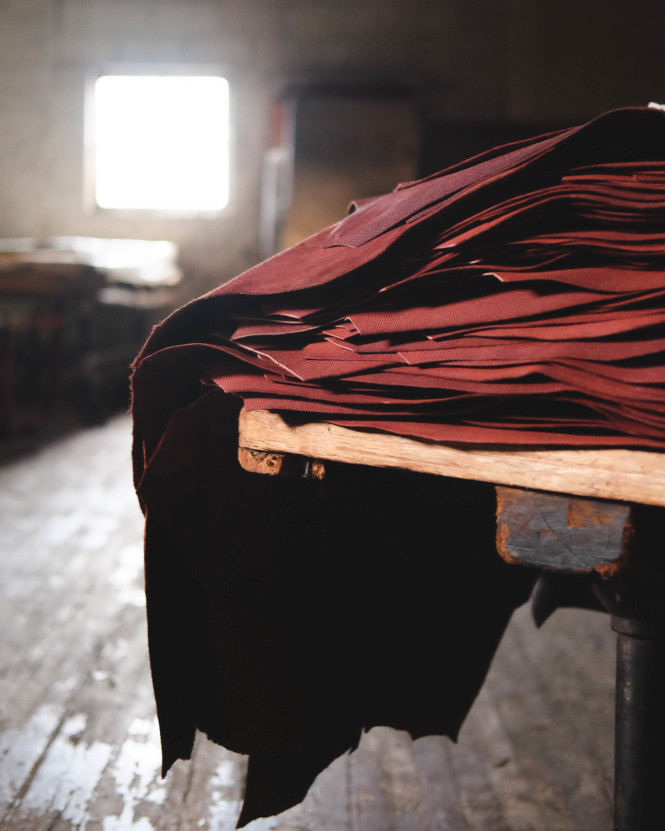One of the great aspects of working as a buyer is the travel – visiting trade shows, showrooms, factories, and the like comes with the territory. That said, all the trips can get a bit tiring. Because of the seasonal nature of clothing, shows are all packed together twice a year. I know people that go from Florence to Paris to New York to Las Vegas every six months, and get tired just thinking about it. Even so, meeting new people and seeing new places makes the fatigue worth it.
On that note, I just returned from a brief work trip to Chicago and while there I had the great fortune of touring the famed Horween tannery. As I’ve mentioned before, I’ve been working with Phil Kalas through Massdrop for a while now, and Phil also heads up operations at Horween. He was kind enough to give me a tour of the place, and I must say that I learned quite a bit. As most of you likely know, Horween is one of the biggest names in the leather business (and has been for about 110 years), and is known for producing chrome and vegetable tanned leathers of all kinds, from Chromexcel to shell cordovan and beyond. Here’s a glimpse into what goes on there every day:
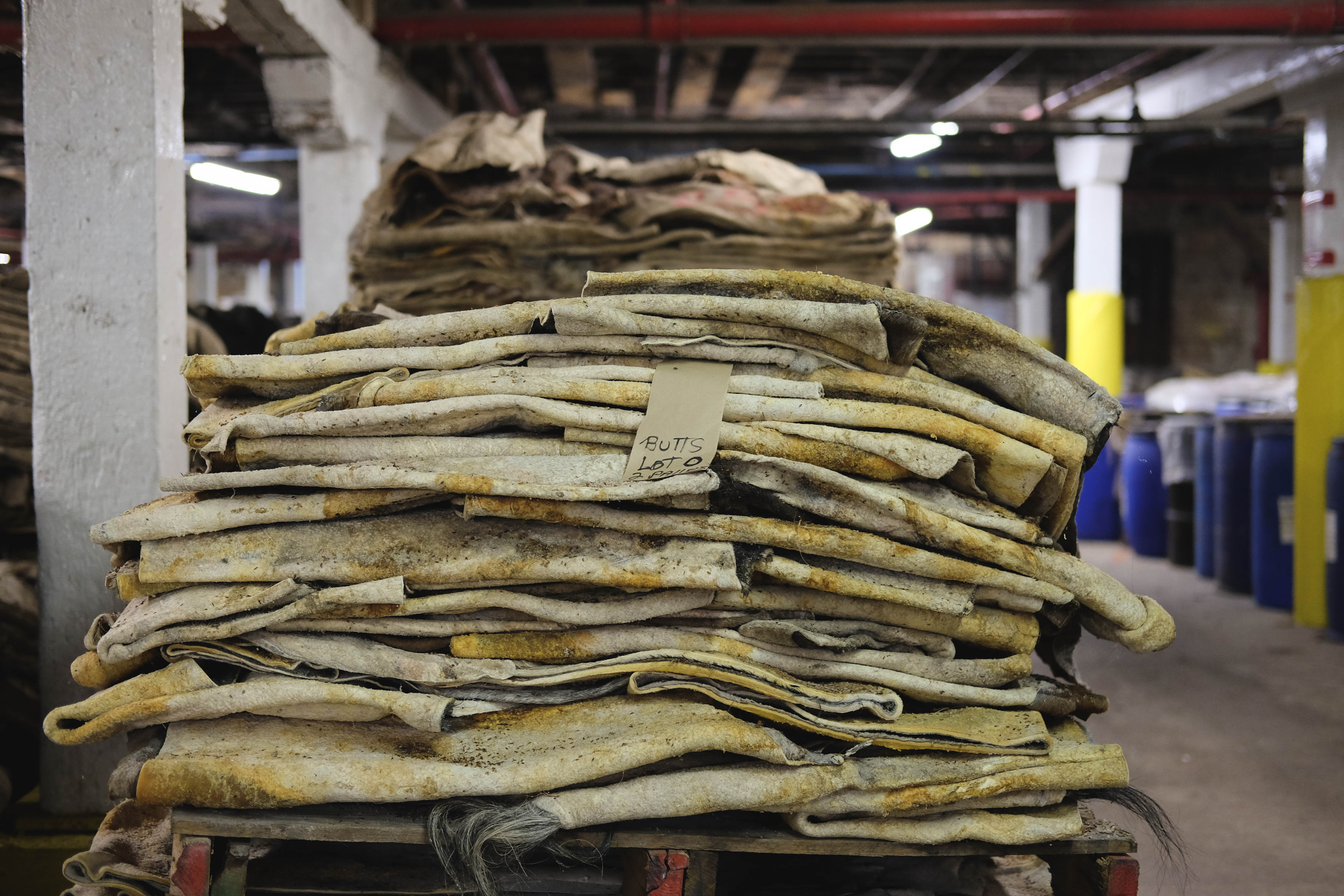
Leather comes from animal skin – there’s no way around that. Cows and horses aren’t slaughtered for their hides, but since the hides are a natural byproduct of other processes they are collected and brought to the tannery. The first step in turning animal skins into a useable material is keeping them from rotting – for this reason, the skins are cured and pickled to stave off any degradation. Next, the hair and fat is removed in large, tumbling machines and the skins are prepped for tanning.
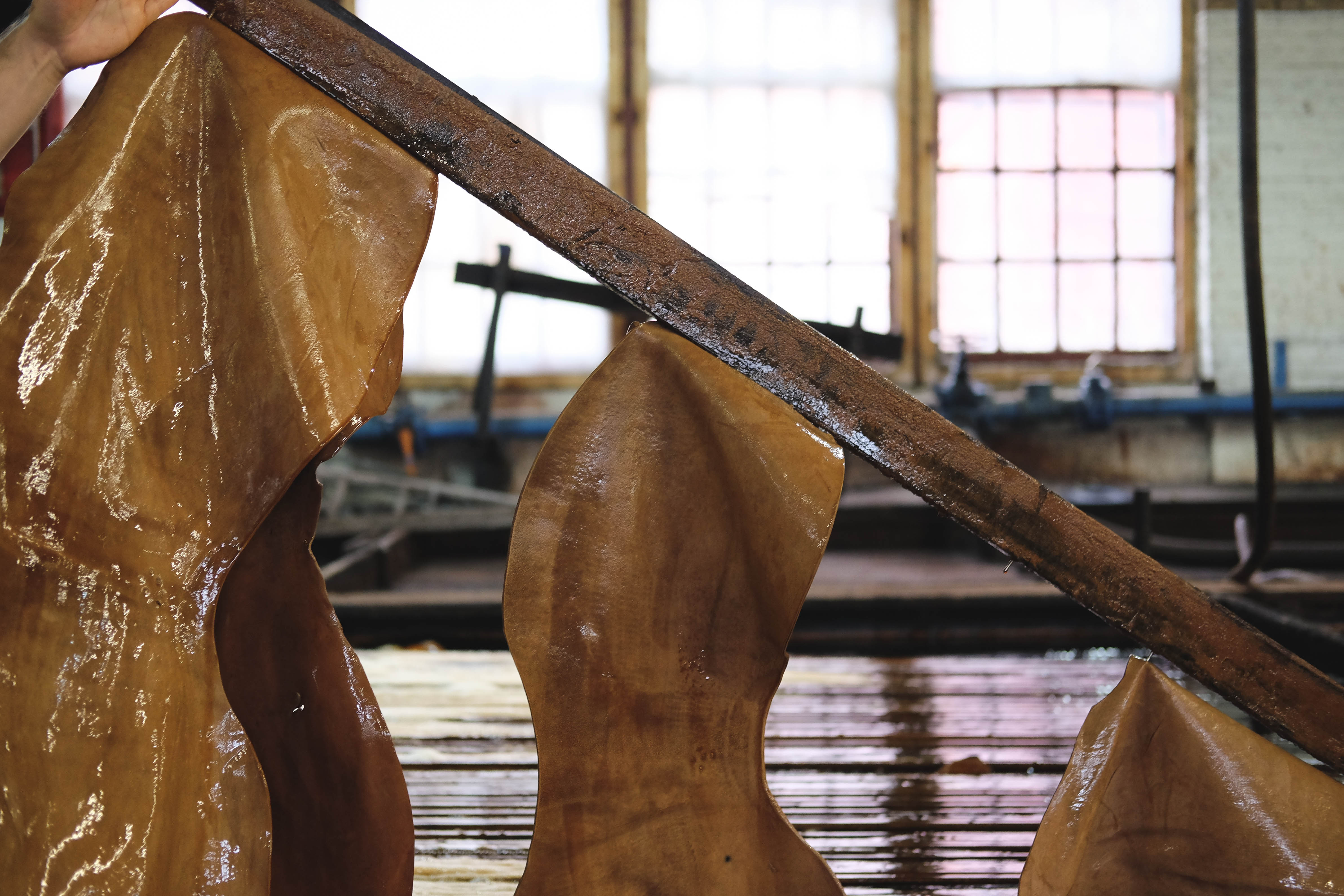
Tanning is the critical step that turns the hides into a useable material. This step uses an acidic chemical compound to turn the skins into leather. If you’re into this stuff, you’ve probably heard about vegetable- and chrome-tanned leather and which one is better for what. Horween produces both, and Phil firmly believes that both types are very useful, and just have different strengths. Vegetable-tanned leathers use tannins from tree bark to produce leather; the process has been around for thousands of years and takes months to complete (skins are hung in shallow tanning pits, like seen above). Chrome-tanned leather uses chromium sulfate in the tanning process, and only takes a couple of days. Although veg-tanned leather is often seen as better – it’s the old school method, after all – the real answer is more complicated than that. Veg-tanned leather may burnish better and show more depth of color at times, but chrome-tanned leather has its own set of strengths and does much better in high heat situations, which is very important when making shoes. Some leathers, like Chromexcel, go through both tanning processes. Above: horse butts (or future shell cordovan hides) go through their second trip in the vegetable tanning pits.
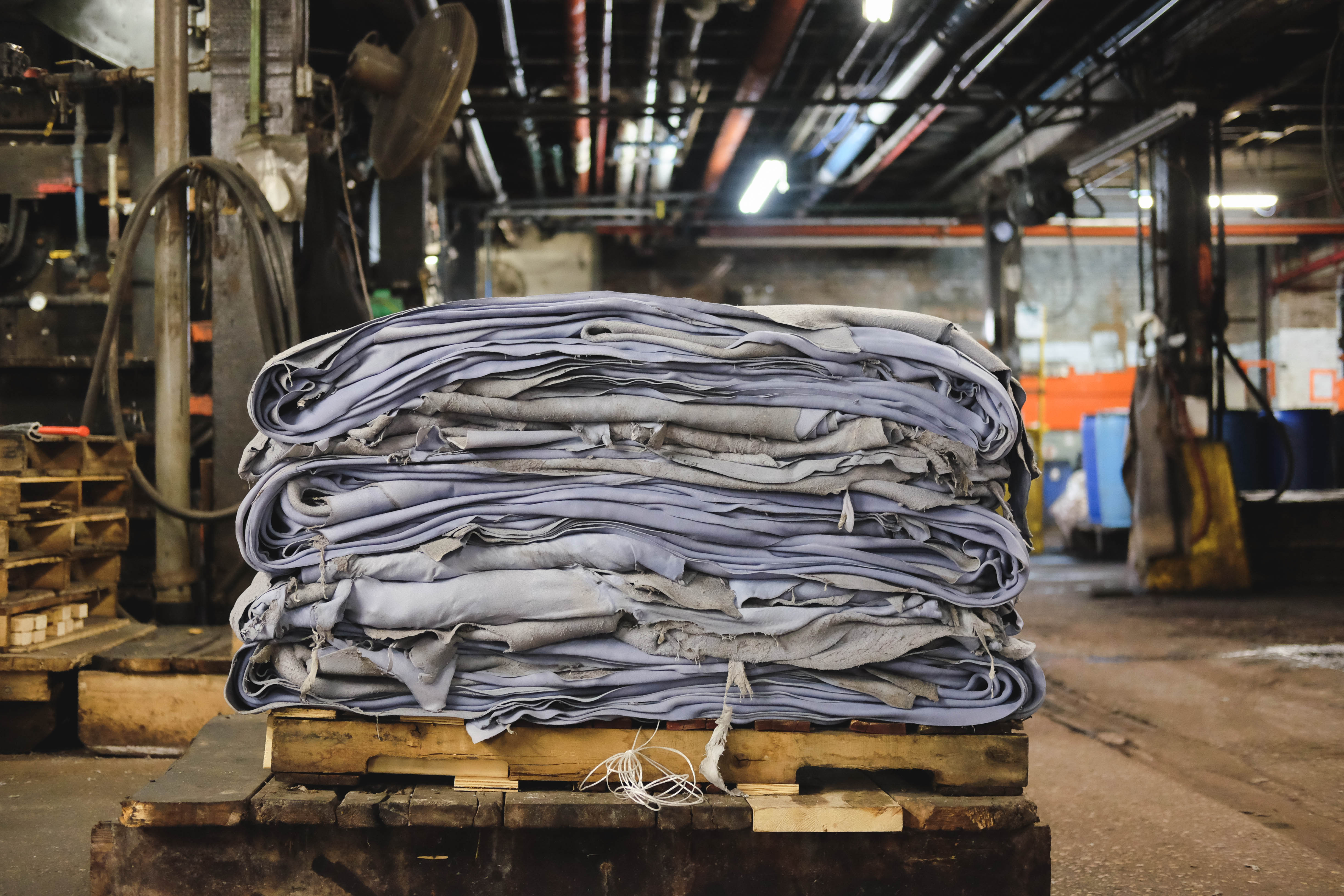
Here’s an interesting fact about chrome-tanned leather: it’s blue. Well, at first. When chrome tanned leather comes out of its 3-day stay in large drums, it’s this lovely shade of sky blue before pigment is applied. After being rung out to get rid of excess moisture, the leather enters a very important stage – sorting.
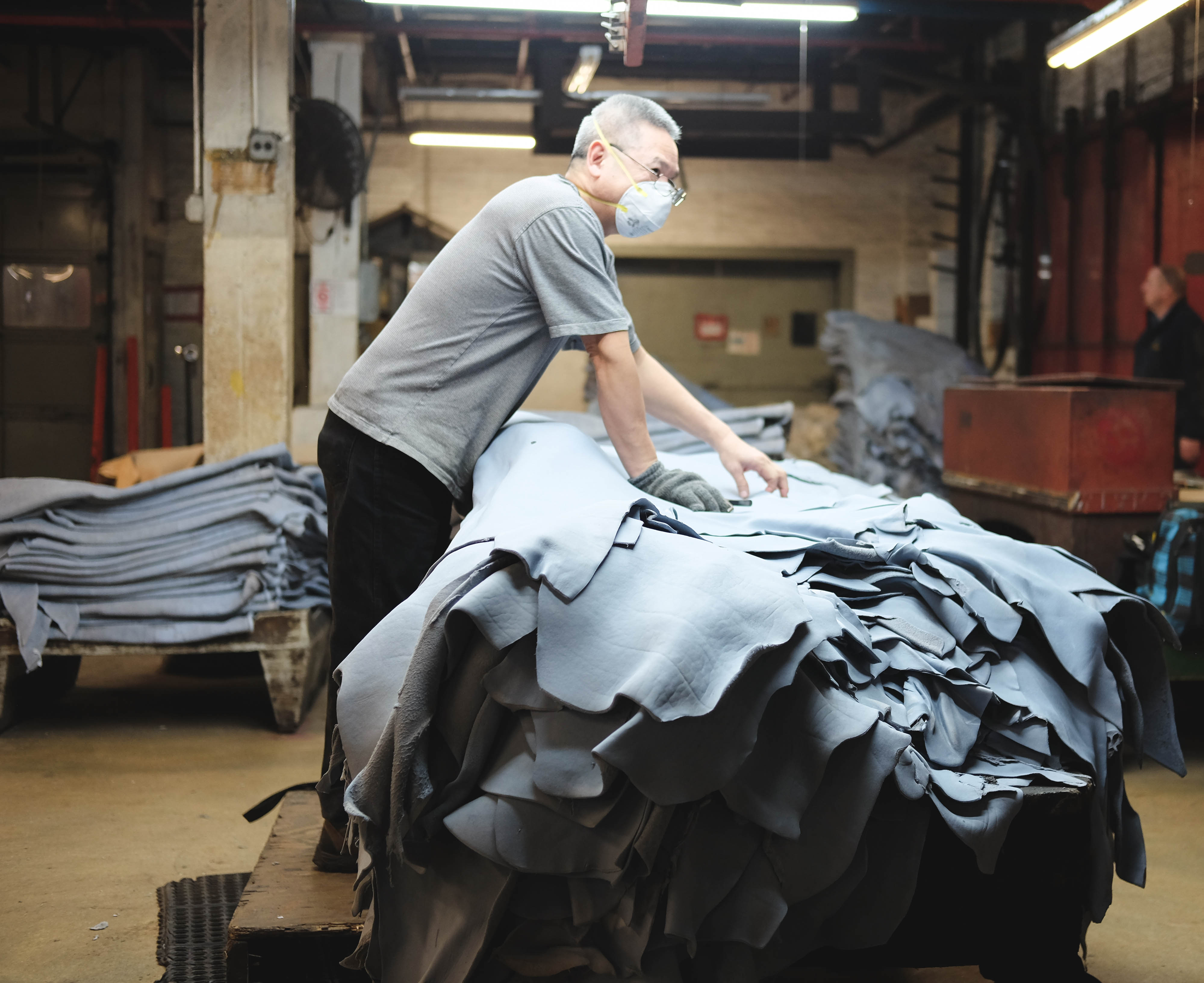
This gentleman is one of the most important people on the floor at Horween. He looks at every hide and grades it, basing his decision on fat wrinkles, scars, and other imperfections (or lack thereof). Ultimately, he decides if a hide will become a baseball glove, a football, a shoe, or something else entirely. He uses a series of holes punched in certain parts of the hide to designate their category, and the hides are then wordlessly taken away and piled up. It’s pretty incredible to watch.
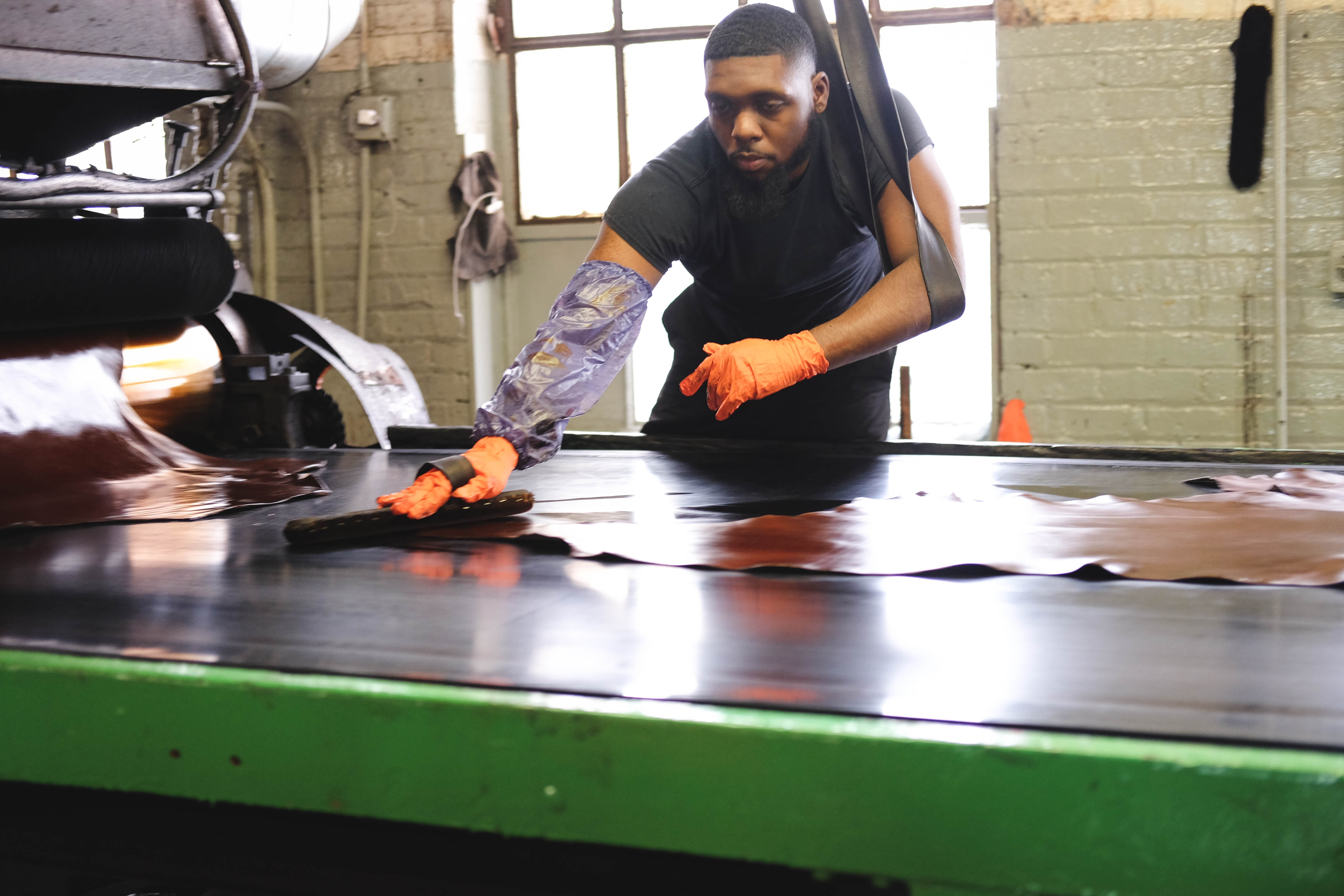
Color can be added to leather in a number of ways. Above you can see a Horween employee putting the final touches on hides that are being dyed in a roller machine.
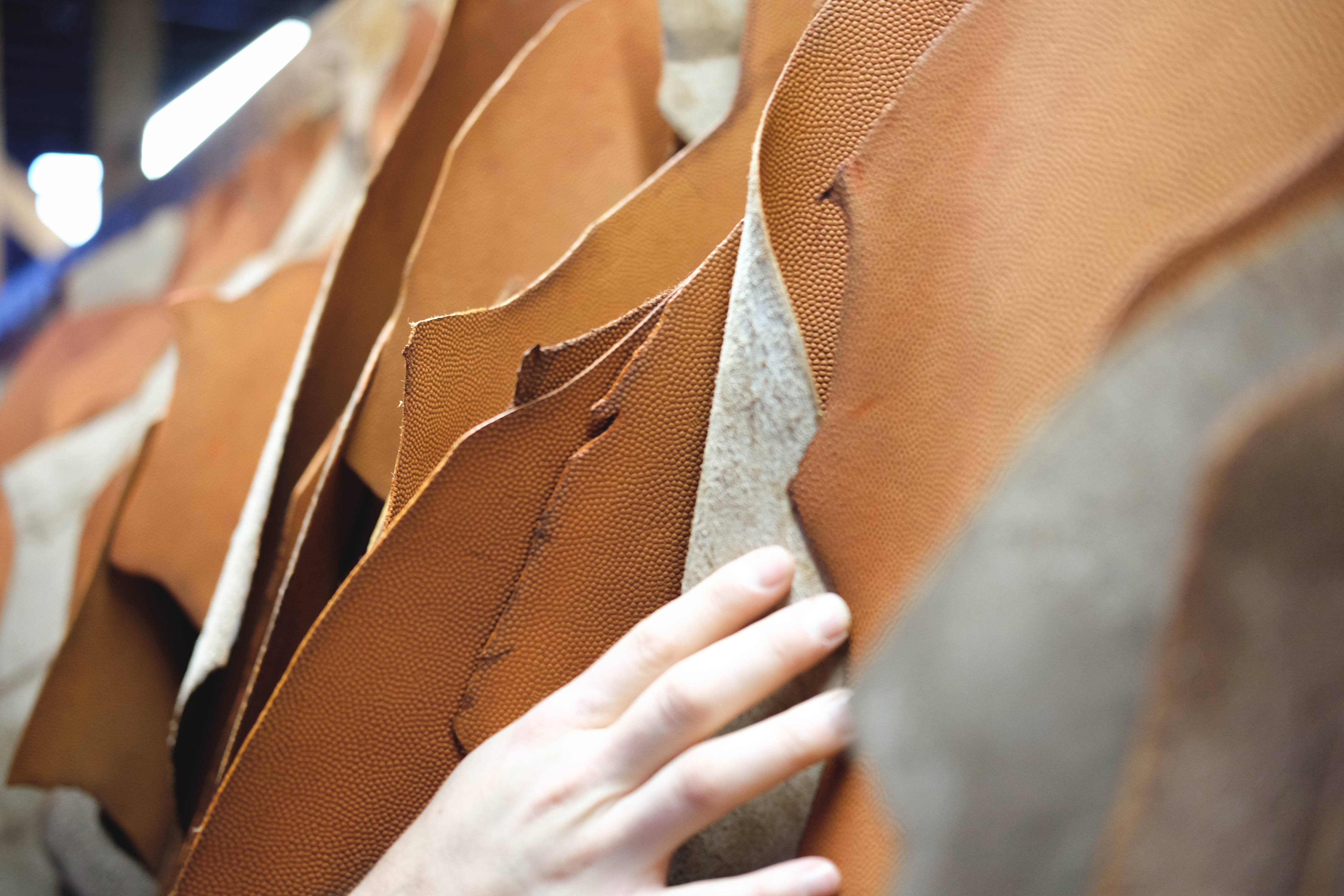
My menswear-centric mind led me to assume that making leather for men’s apparel was most of Horween’s business, but that is far from accurate. One of the biggest (if not the biggest) Horween accounts is Wilson, who uses Horween for their leather balls and other sporting goods products. Horween makes all the leather for the NFL balls and many of the NCAA ones as well (the red leather at the top of the article is for NFL balls, this tan one above is for the NCAA). If you look very closely, you can even see the tiny ‘W’ insignia scattered amongst the pebble grain.

Ok, now the part that we’ve all been waiting for – shell cordovan. Horween helped bring this special material into the public eye a long time ago, and they have since become the gold standard for shell. The process for making shell is extremely time consuming, from the tanning to the finishing. Here, horse butts sit in piles of 1000 after they have been tanned. They are coated with a blend of oils (below) and sit like this for months. Phil tells me that shells, like many things, become better the longer they age.
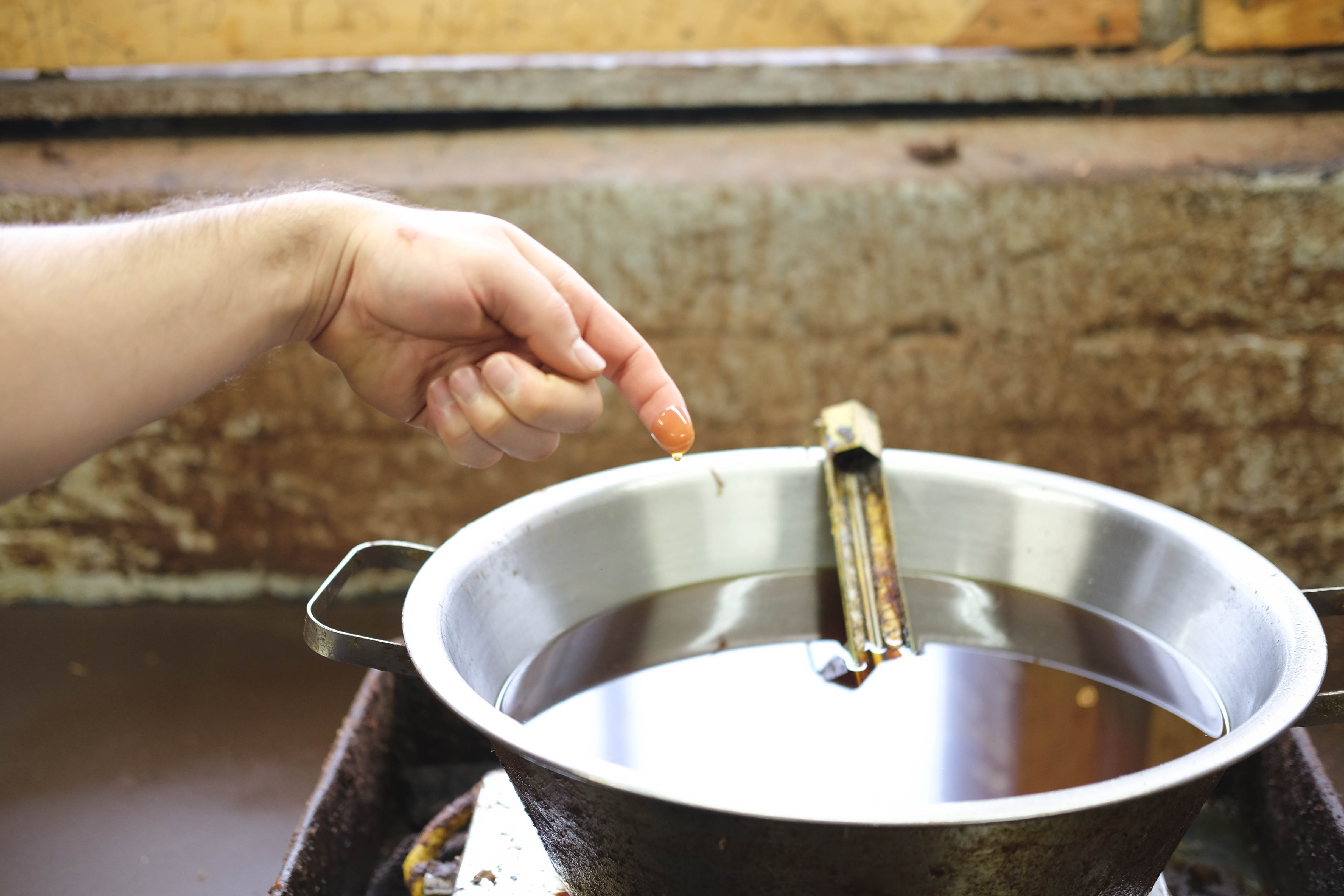
When the shells are ready to be dyed and finished, they are first trimmed and prepped (below).
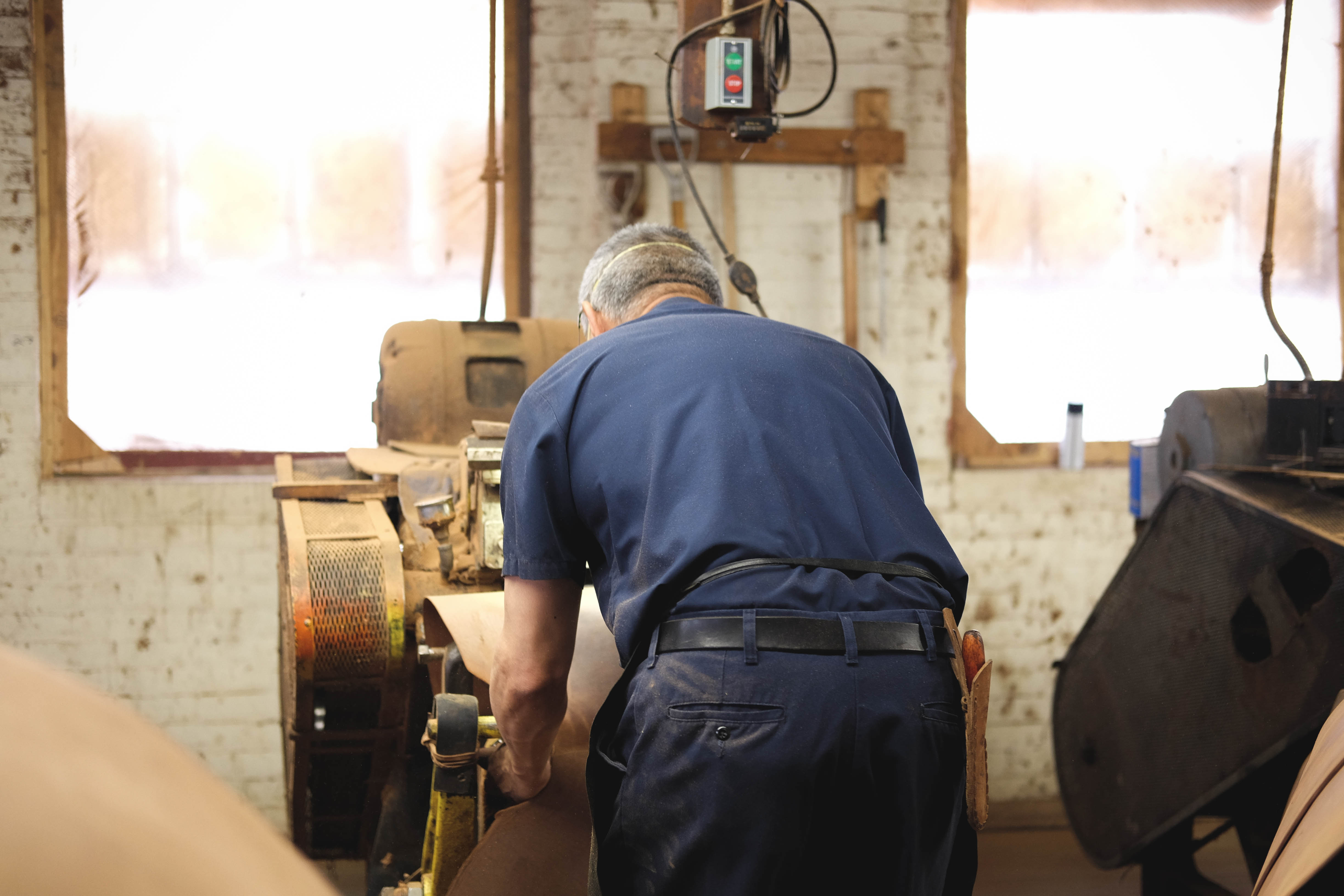
After the color is applied, they can be found hanging in all corners of the work floor. While I was touring the shell area, I was able to peek into a cabinet that had a sample of every shell color Horween had ever made (some samples were over 50 years old!). Phil asked me not to post this so that they wouldn’t get any calls asking for availability of discontinued colors, but I can say that the options were impressive to behold. Browsing the dozens of shell colors that are no longer made – each with the color ‘recipe’ on the back – was a real treat.

Now, here’s something interesting. Here is a picture of the same piece of #8 shell, and the only difference is that it was rotated 180 degrees. The difference in appearance is dramatic – no wonder this stuff is so hard to photograph! This difference has to do with the orientation of the grain (kind of like how suede can look different depending on which way the fibers are oriented).
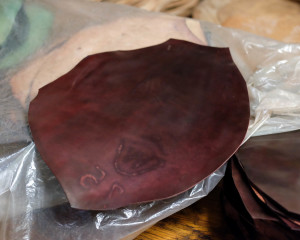
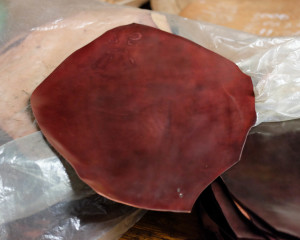
And then there’s this – the Horween stamp. This prized stamp lands once on each piece of shell that leaves the tannery. Having a piece of shell with this stamp on it has become so popular that Horween has even had trouble with counterfeiters!

I could go on, but it’s getting late and this article is long enough as is. Thanks so much to Phil and Nick, who took a ton of time out of their busy days to answer my incessant questions. 